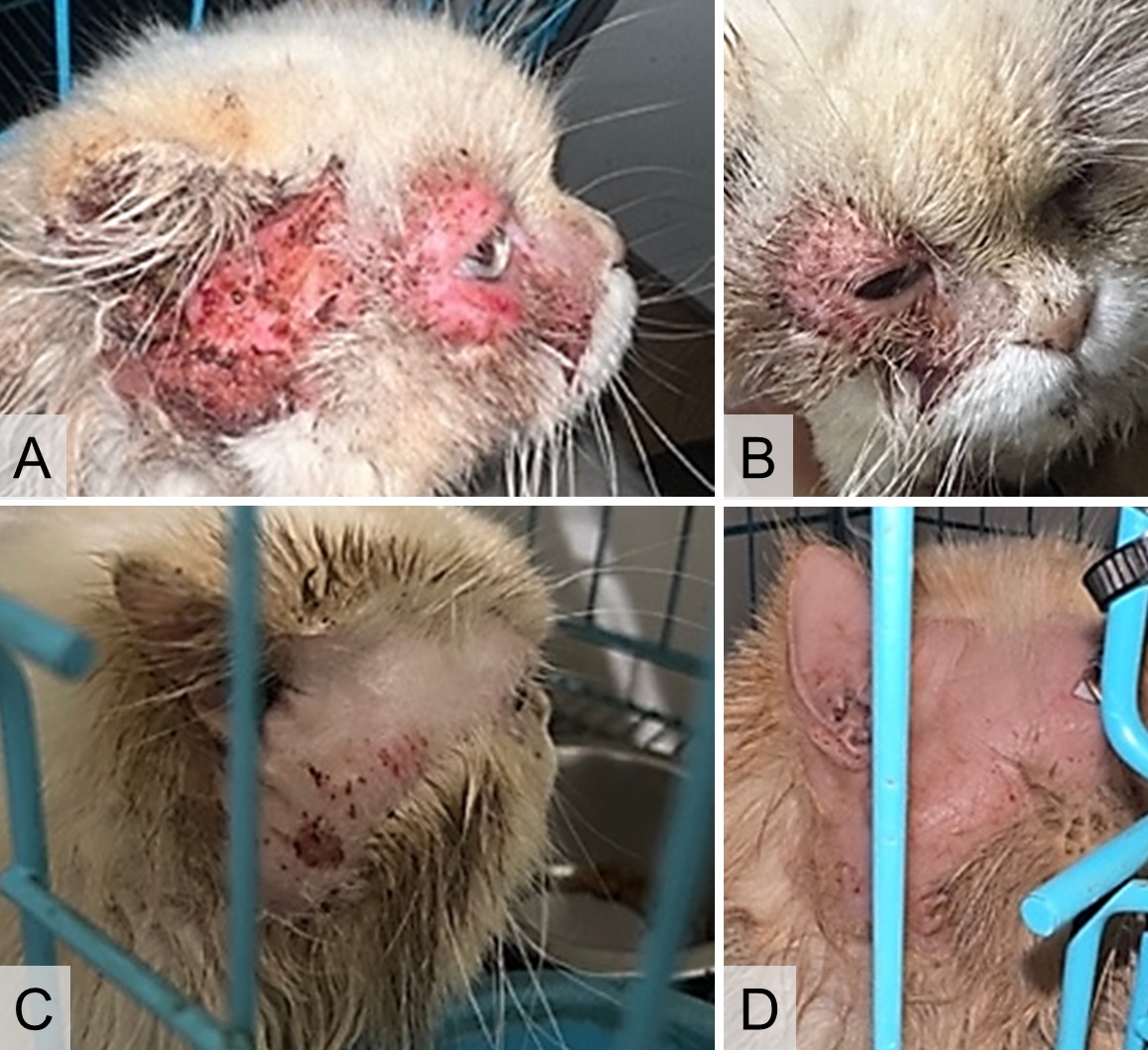Diagnosis and treatment of Malassezia dermatitis in a Persian cat
Abstract
The presence of Malassezia fungus on the skin, in both normal and excessive amounts, can activate the skin's immune system in cats. This paper reports a case of a seven-year-old Persian cat named Imo, who presented with eye pain and symptoms of dermatitis during a physical examination. A supporting examination, including a combo test kit and cytology, led to a diagnosis of Malassezia dermatitis. The therapy provided involved cleaning and compressing the wound with a saline solution containing NaCl, administering itraconazole and an oxyfresh water additive, injecting marbofloxacin subcutaneously, and applying vaseline topically. The patient showed noticeable improvement in wound healing within 24 days of hospitalization
Downloads
References
Bond R, Guillot J, Cabañes FJ. 2010. Malassezia yeasts in animal disease. Malassezia and the skin: Science and clinical practice. 271-299. https://doi.org/10.1007/978-3-642-03616-3_10
Dall'Oglio F, Nasca MR, Gerbino C, Micali G. 2022. An overview of the diagnosis and management of seborrheic dermatitis. Clinical, cosmetic and investigational dermatology. 1:1537-1548. https://doi.org/10.2147/CCID.S284671 | PMid:35967915 | PMCid:PMC9365318
Guillot J, Bond R. 2020. Malassezia yeasts in veterinary dermatology: an updated overview. Frontiers in cellular and infection microbiology. 10:79. https://doi.org/10.3389/fcimb.2020.00079 | PMid:32181160 | MCid:PMC7059102
Jacobson LS. 2002. Diagnosis and medical treatment of otitis externa in the dog and cat. Journal of the South African Veterinary Association. 73(4):162-170. https://doi.org/10.4102/jsava.v73i4.581 | PMid:12665128
Ordeix L, Galeotti F, Scarampella F, Dedola C, Bardagí M, Romano E, Fondati A. 2007. Malassezia spp. overgrowth in allergic cats. Veterinary dermatology. 18(5):316-323. https://doi.org/10.1111/j.1365-3164.2007.00609.x | PMid:17845619
Rhimi W, Theelen B, Boekhout T, Aneke CI, Otranto D, Cafarchia C. 2021. Conventional therapy and new antifungal drugs against Malassezia infections. Medical Mycology. 59(3):215-234. https://doi.org/10.1093/mmy/myaa087 | PMid:33099634
Souza, C. 2019. Malassezia Dermatitis in Dogs and Cats. College of Veterinary Medicine. University Of Illinois Urbana-Champaign. https://vetmed.illinois.edu/2019/04/16/malassezia-dermatitis-dogs-cats/.
Wedi B. 2016. Dermatitis update: clinical manifestations, pathogenesis and current therapeutic approaches. Allergo Journal International. 25:219-232. https://doi.org/10.1007/s40629-016-0133-1

Copyright (c) 2024 CC-BY-SA

This work is licensed under a Creative Commons Attribution-ShareAlike 4.0 International License.
Authors who publish with this journal agree to the following terms:
1. Authors retain copyright and grant the journal right of first publication with the work simultaneously licensed under a Creative Commons Attribution License that allows others to share the work with an acknowledgement of the work's authorship and initial publication in this journal.
2. Authors are able to enter into separate, additional contractual arrangements for the non-exclusive distribution of the journal's published version of the work (e.g., post it to an institutional repository or publish it in a book), with an acknowledgement of its initial publication in this journal.
3. Authors are permitted and encouraged to post their work online (e.g., in institutional repositories or on their website) prior to and during the submission process, as it can lead to productive exchanges, as well as earlier and greater citation of published work (See The Effect of Open Access).

.jpg)















